News
Deptherapy’s Red Sea Wrecks – Part 7
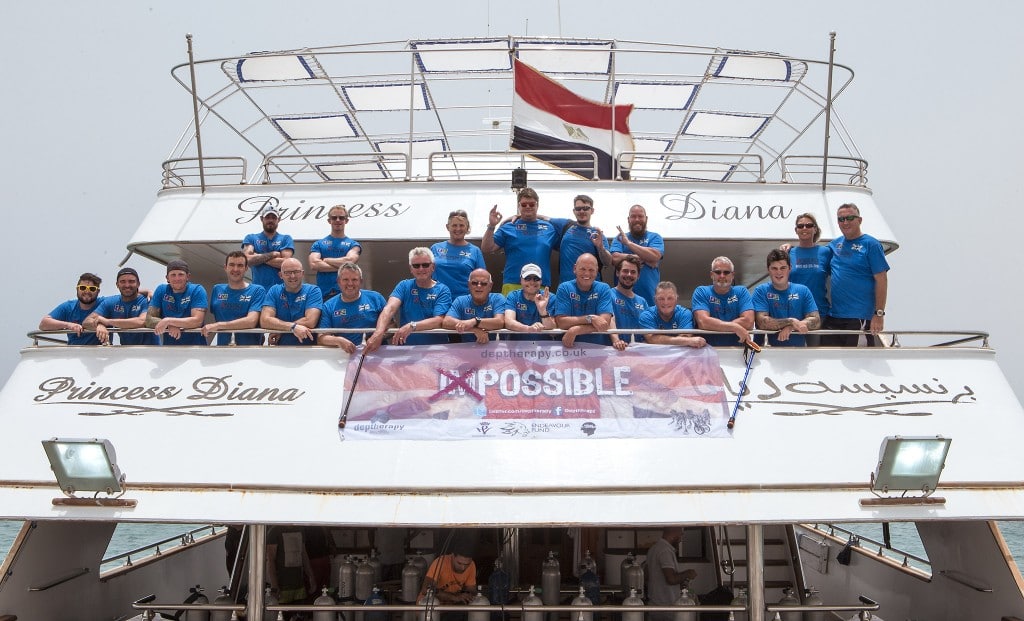
The final part of Gary Green’s account of the Deptherapy Red Sea Military and Forgotten Wrecks liveaboard expedition.
Day 10: Umm Gamar Reef
The last dive of the trip; it wasn’t far away and it was part of the same reef where we had undertaken our check dives on the first day. I would personally nickname this dive ‘the aquarium dive’. I have honestly never seen a reef like it; there was more life on this reef than I have ever seen on any other dive. There was also something I had never even seen before, a porcupine puffer fish (if that is 100% the correct name? I have it on my GoPro) it was absolutely enormous. It was hidden away in a small hole in the middle patch of coral. I looked down the hole and there it was just swimming out towards me, its head absolutely massive. I was completely stopped in my tracks as I watched this giant creature bob itself back and forth. I also encountered two giant morays, the absolute dragons of the sea. No matter how many times I see them and dive with them, I never quite feel comfortable seeing their faces.
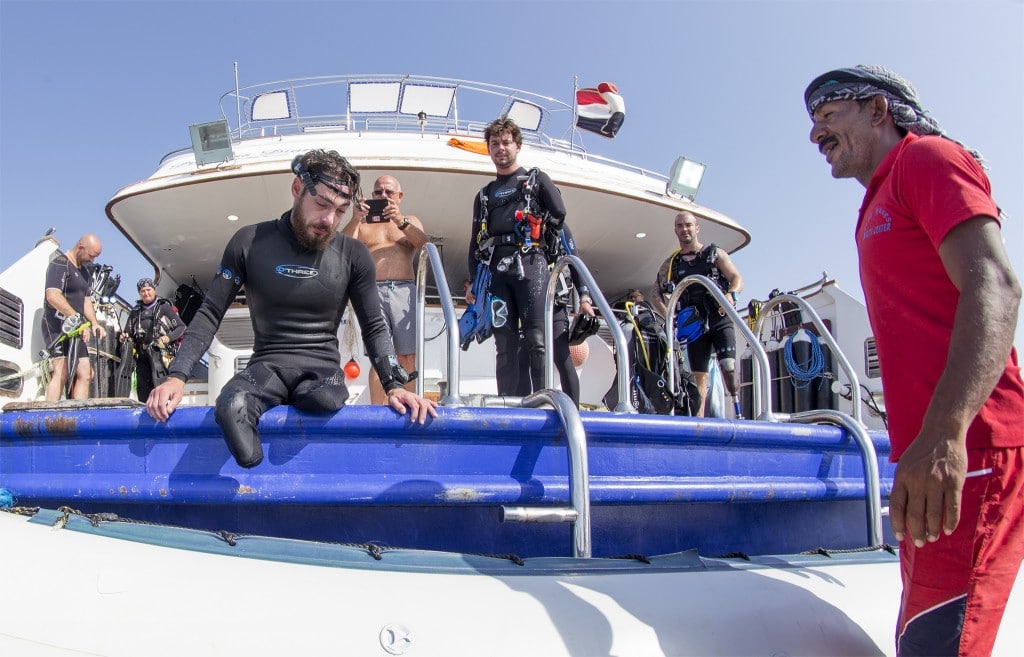
Apart from the monsters already mentioned, everywhere you looked was just full of life. It was a case of every time you looked in a different direction there was something else to see. It was like the worlds’ richest and biggest sea life centre, a bit of everything all thrown into the mix; not only that but the colours of the coral were breathtaking; like most of the Red Sea to be honest but somehow here everything just seemed even brighter. I can’t think of a better way to spend our last dive than in the presence of some of the most beautiful creatures known to man. In fact, that dive summed up the whole trip for me… a relaxed dive underwater, having the privilege to spend time in the most secret of all gardens, the coral gardens.
A few words of thanks…
Steve and Clare Rattle
The host and hostess with the mostest – I think that’s the term anyway! I may have to double check. Steve and Clare have been with Deptherapy for a long time, long before I was involved with the charity in any case. I first met them at the Dive Show a few months before I flew out to Roots for my Open Water Diver course back in 2015, not something I would easily forget. Their place in Roots is one of the most spectacular in the Red Sea and the house reef is where I learned to dive and where I was fortunate enough to have dived with a pod of dolphins that had come into the reef to feed. The resort camp (Roots) sits between Safaga and El Quseir; it’s remote in location, which means when you are diving you have the reef to yourself. Once you follow the line out you are within an underwater aquarium absolutely full of all the sea life you could ever wish to see.
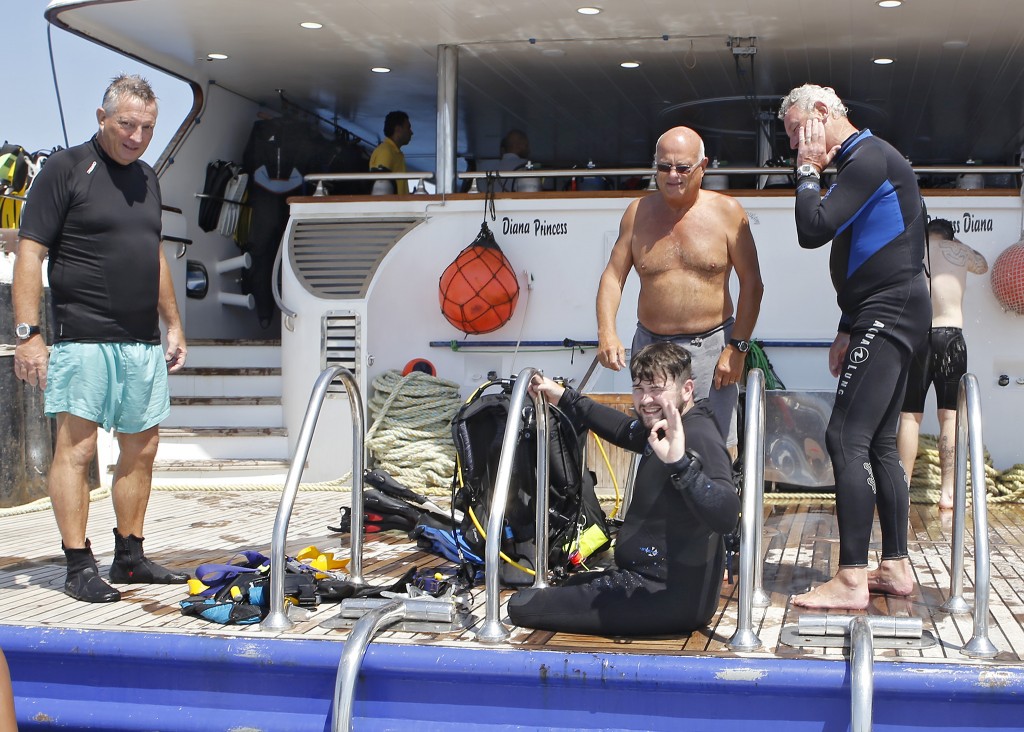
In the reception of Roots there are plaques along the wall of all the different regiments that the injured troops have served in. Both Steve and Clare are seasoned divers (being very tactful with my words there) and during this trip Steve often gave tours of the wrecks that he was well accustomed to. Clare also helped out on our dives, often being a buddy for Ben in the strong currents when he was struggling due to the fact that he has no legs to propel himself. I didn’t realise at the time but Steve is a fantastic underwater photographer. He displayed the pictures that he had taken on the TV screen in the briefing room and a lot of the blokes were surprised at just how clear they were. I watched him in the water a few times as he dived with us, like most of the pros team, they are so comfortable in the water, flawless in skill and effortless in technique.
Steve and Clare had chartered the Princess Diana for Deptherapy to make this liveaboard possible. I’m sure that if it wasn’t for them taking time out of their busy schedule (Clare seems to almost fill hers with sunbathing) then I’m not sure if the trip would have ever met its ambitious goal, or at least I am certain it would have been a lot harder. The only downside is that Steve is a West Ham fan, but as they say you can’t win them all! I think in time I may be able to slowly but surely convert him to the Mighty Reds and by that I certainly don’t mean Liverpool. In October this year at the Dive Show, they will be hosting their Pharaoh Dive Club Birthday Bash, to which they have generously invited Deptherapy. Steve and Clare are long time (lifelong) friends of the charity who have truly aided its success. I’m not sure they quite get the praise they deserve, ever humble in their generosity, I, on behalf of the Board, would like to thank them.
To recap what they have given to Deptherapy: they introduced the ‘Miss Scuba’ organisation to Deptherapy, who have to date raised over £7,000. The Pharaoh Dive Club Birthday Bash will raise around £5,000 that they will donate to the charity and they run the Open Water courses for Deptherapy free of charge. They also ran the Advanced Open Water diver courses free of charge for a long time and they then charged below cost for the courses. Words cannot describe what they have done for the charity.
Dmitri Knyazev
A Russian national who is a prolifically skilled underwater photographer and videographer, Dmitri became involved in Deptherapy through his outstanding work with disabled divers. I had seen a lot of his photos with wheelchairs under the sea with disabled divers who he had taught to dive and raised their profile. He then agreed to come and take photos of the Deptherapy team at work. The images he takes are perfect in both quality and content, highlighting the outstanding way that Deptherapy goes above and beyond in its adaptive teaching. His photos bring awareness and a visual representation of the objectives of the charity, depicting the figures of wounded veterans perfectly buoyant in the Red Sea. Some divers missing arms, some missing legs and some missing both, but still as competent in the water as a fully abled individual. Dmitry takes time out of his life to come and support on the trips, truly capturing the most fascinating of images and profiling the charity in the most inspiring of ways.
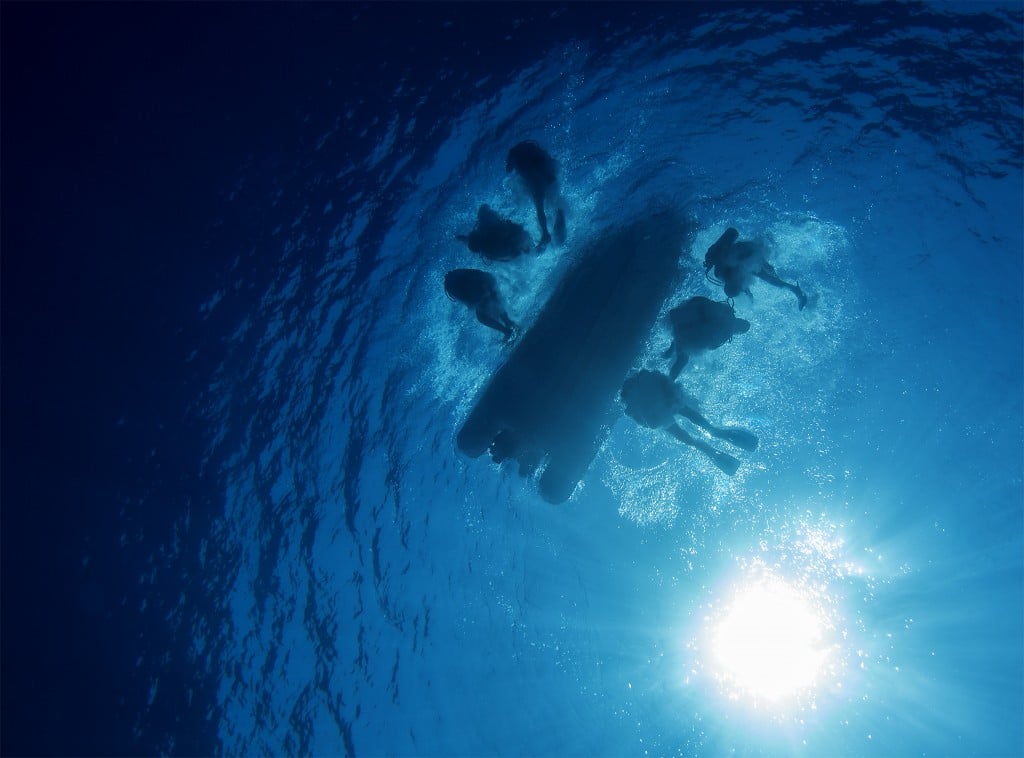
In Summary
Deptherapy consists of a foundation of generosity, an idea that was completely selfless, taking disabled (both mentally and physically) veterans and using scuba diving as a form of therapy. It grew beyond that, it dared to be greater than the original idea; not just to take wounded veterans in the sea, but also to train them as qualified divers. To break past the limits of what people conceive as possible, what some call impossible. Let’s banish the I and the M, let’s make this possible. The team become adaptive, the Master Instructors thinking outside the box to get limbless veterans to perform a Controlled Swimming Ascent (CESA) or a veteran with one arm to remove and replace his mask; they were patient with their innovative techniques.
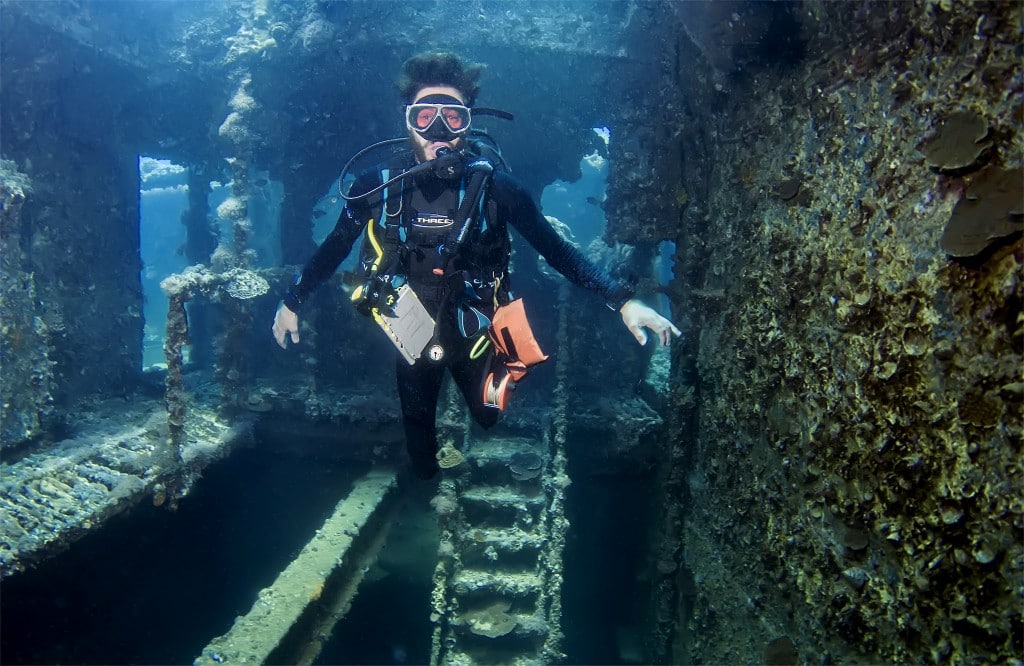
They overcame challenges again and again, guys with PTSD who would have ups and downs, so the trainers became mental health first aid trained and could now coach and guide struggling veterans. They run programmes to teach instructors how to use the adaptive techniques, putting themselves in the students’ position so they can use the most practical and realistic solutions. Doctors joined the board and the University of Sheffield produced a case study proving the success of Deptherapy’s ability to rehabilitate veterans through the medium of scuba diving.
This ten days on the liveaboard was at this point, the charities Everest. It was easily conquered. I witnessed myself veterans with no legs penetrate wrecks up to 40 meters below the Red Sea and come up with big smiles on their faces. At the start of the trip some of us were strangers, there was ring rust in the water on our check dives but within a couple of days we were a band of brothers again and a united team above and below the water. On the Scalaria another dive team went past us from a neighbouring liveaboard. I saw their instructors look at our group, gliding through the water with perfect trim and buoyancy. He looked at the divers he was with, kicking their fins up and down, sculling with their arms and he gave a double take as he saw the guys with no legs gracefully moving through the sea. If there was any testimony to what the Pros Team had done then in my opinion that was it. This Everest was climbed, completed, knocked out of the park and now we move on to the next challenge. In August next year there will be a selection process for veterans who will be taken to Truk Lagoon. Deptherapy has grown strong and is still growing in strength. I have seen with my own eyes, once again, just how amazing and incredible people can be. Well done to everyone that smashed their Wreck Diver Speciality. Thank you to everyone who so generously makes these things happen and thank you to the charity and Instructors for continuing to break the bar on scepticism.

Donate to Deptherapy or find out more about their work at www.deptherapy.co.uk
Thanks to Dmitry Knyazev for the incredible photographs.
Blogs
Northern Red Sea Reefs and Wrecks Trip Report, Part 3: The Mighty Thistlegorm

Jake Davies boards Ghazala Explorer for an unforgettable Red Sea diving experience…
Overnight, the wind picked up, making the planned morning dive a bit bumpy on the Zodiacs to the drop point on Thomas Reef. There, we would dive along the reef before descending through the canyon and then passing under the arch before ascending the wall with a gentle drift. The site provided great encounters with more pelagic species, including shoals of large barracuda, tuna, and bigeye trevally.
Once back on the boat, it was time to get everything tied down again as we would head back south. This time, with the wind behind us, heading to Ras Mohammed to dive Jackfish Alley for another great gentle drift wall dive before then heading up the coast towards the Gulf of Suez to moor up at the wreck of the Thistlegorm. This being the highlight wreck dive of the trip and for many onboard, including myself, it was the first time diving this iconic wreck. I had heard so much about the wreck from friends, and globally, this is a must on any diver’s list. Fortunately for us, there was only one other boat at the site, which was a rarity. A great briefing was delivered by Ahmed, who provided a detailed background about the wreck’s history along with all the required safety information as the currents and visibility at the site can be variable.

Kitting up, there was a lot of excitement on deck before entering the water and heading down the shoreline. Descending to the wreck, there was a light northerly current which reduced the visibility, making it feel more like the conditions that can be found off the Welsh coast. At 10m from the bottom, the outline of the wreck appeared as we reached the area of the wreck which had been bombed, as our mooring line was attached to part of the propeller shaft. Arriving on deck, instantly everywhere you looked there were many of the supplies which the ship was carrying, including Bren Carrier tanks and projectiles that instantly stood out.

We headed around the exterior, taking a look at the large propeller and guns mounted on deck before entering the wreck on the port side to take a look in the holds. It was incredible to see all the trucks, Norton 16H, and BSA motorcycles still perfectly stacked within, providing a real snapshot in time.

Overall, we had four dives on the Thistlegorm, where for all of the dives we were the only group in the water, and at times, there were just three of us on the whole wreck, which made it even more special, especially knowing that most days the wreck has hundreds of divers. Along with the history of the wreck, there was plenty of marine life on the wreck and around, from big green turtles to batfish, along with shoals of mackerel being hunted by trevally. Some unforgettable dives.

The final leg of the trip saw us cross back over the Suez Canal to the Gobal Islands where we planned to stay the night and do three dives at the Dolphin House for the potential of sharing the dive with dolphins. The site, which included a channel that was teeming with reef fish, especially large numbers of goatfish that swam in large shoals along the edge of the reef. These were nice relaxing dives to end the week. Unfortunately, the dolphins didn’t show up, which was okay as like all marine life they are difficult to predict and you can’t guarantee what’s going to be seen. With the last dive complete, we headed back to port for the final night where it was time to clean all the kit and pack before the departure flight the next day.

The whole week from start to finish on Ghazala Explorer was amazing; the boat had all the facilities you need for a comfortable week aboard. The crew were always there to help throughout the day and the chefs providing top quality food which was required after every dive. The itinerary providing some of the best diving with a nice mixture of wreck and reef dives. I would recommend the trip to anyone, whether it’s your first Red Sea liveaboard in the Red Sea or you’re revisiting. Hopefully, it’s not too long before I head back to explore more of the Red Sea onboard Ghazala Explorer.

To find out more about the Northern Red Sea reef and wrecks itineraries aboard Ghazala Explorer, or to book, contact Scuba Travel now:
Email: dive@scubatravel.com
Tel: +44 (0)1483 411590
Photos: Jake Davies / Avalon.Red
Blogs
Northern Red Sea Reefs and Wrecks Trip Report, Part 2: Wall to Wall Wrecks

Jake Davies boards Ghazala Explorer for an unforgettable Red Sea diving experience…
The second day’s diving was a day full of wreck diving at Abu Nuhas, which included the Chrisoula K, Carnatic, and Ghiannis D. The first dive of the day was onto the Chrisoula K, also known as the wreck of tiles. The 98m vessel remains largely intact where she was loaded with tiles which can be seen throughout the hold. The stern sits at 26m and the bow just below the surface. One of the highlights of the wreck is heading inside and seeing the workroom where the machinery used for cutting the tiles are perfectly intact. The bow provided some relaxing scenery as the bright sunlight highlighted the colours of the soft coral reef and the many reef fish.

Following breakfast, we then headed to the next wreck, which was the Carnatic. The Carnatic is an 89.9m sail steamer vessel that was built in Britain back in 1862. She ran aground on the reef back in 1869 and remains at 27m. At the time, she was carrying a range of items, including 40,000 sterling in gold. An impressive wreck where much of the superstructure remains, and the two large masts lay on the seafloor. The wooden ribs of the hull provide structures for lots of soft corals, and into the stern section, the light beams through, bouncing off the large shoals of glass fish that can be found using the structure as shelter from the larger predators that are found outside of the wreck.

The final wreck at Abu Nuhas was the Ghiannis D, originally called ‘Shoyo Maru,’ which was 99.5m long and built in Japan back in 1969 before becoming a Greek-registered cargo ship in 1980. The ship then ran aground on the reef on April 19th, 1983, and now sits at the bottom at a depth of 27m. Heading down the line, the stern of the ship remains in good condition compared to the rest of the hull. The highlight of the wreck, though, is heading into the stern section and down the flights of stairs to enter the engine room, which remains in good condition and is definitely worth exploring. After exploring the interior section of the ship, we then headed over to see the rest of the superstructure, where it’s particularly interesting to see the large table corals that have grown at the bow relatively quickly considering the date the ship sank. After surfacing and enjoying some afternoon snacks, we made sure everything was strapped down and secured as we would be heading north and crossing the Gulf of Suez, where the winds were still creating plenty of chop.

The next morning, it was a short hop to Ras Mohammed Nature Reserve for the next couple of days of diving. The 6am wake-up call came along with the briefing for the first site we would be diving, which was Shark & Yolanda. The low current conditions allowed us to start the dive at Anemone City, where we would drift along the steep, coral-filled wall. These dives involved drifts, as mooring in Ras Mohammed wasn’t allowed to protect the reefs. As a dive site, Shark & Yolanda is well-known and historically had a lot of sharks, but unfortunately not so many in recent years, especially not so early in the season. However, there was always a chance when looking out into the blue.

The gentle drift took us along the steep walls of the site, with plenty of anemone fish to be seen and a huge variety of corals. It wasn’t long into the dive before we were accompanied by a hawksbill turtle, who drifted with us between the two atolls before parting ways. Between the two reefs, the shallow patch with parts of coral heads surrounded by sand provided the chance to see a few blue-spotted stingrays that were mainly resting underneath the corals and are always a pleasure to see. With this being the morning dive, the early sunlight lit up the walls, providing tranquil moments. Looking out into the blue, there was very little to be seen, but a small shoal of batfish shimmering underneath the sunlight was a moment to capture as we watched them swim by as they watched us.

Towards the end of the dive, we stopped at the wreck of the Jolanda where the seafloor was scattered with toilets from the containers it was carrying. This provided a unique site to make a safety stop, which was also accompanied by a large barracuda slowly swimming by, along with a hawksbill turtle calmly swimming over the reef as the sun rays danced in the distance.
For the next dive, we headed north to the Strait of Tiran to explore the reefs situated between Tiran Island and Sharm El Sheik, which were named after the British divers who had found them. We started on Jackson before heading to Gordons Reef, where we also did the night dive. All the atolls at these sites provided stunning, bustling coral reefs close to the surface and steep walls to swim along, which always provided the opportunity to keep an eye out for some of the larger species that can be seen in the blue. Midwater around Jackson Reef was filled with red-toothed triggerfish and shoals of banner fish, which at times were so dense that you couldn’t see into the blue. Moments went by peacefully as we enjoyed the slow drift above the reef, watching these shoals swim around under the mid-afternoon sun.

The night dive at Gordon’s Reef was mainly among the stacks of corals surrounded by sand, which was great to explore under the darkness. After some time circling the corals, we came across what we were really hoping to find, and that was an octopus hunting on the reef. We spent the majority of the dive just watching it crawl among the reef, blending into its changing surroundings through changes in colour and skin texture. It’s always so fascinating and captivating to watch these incredibly intelligent animals, in awe of their ability to carry out these physical changes to perfectly blend into the reef. Before we knew it, it was time to head back to the boat to enjoy a well-deserved tasty dinner prepared by the talented chefs onboard.
Check in for the 3rd and final part of this series from Jake tomorrow!
To find out more about the Northern Red Sea reef and wrecks itineraries aboard Ghazala Explorer, or to book, contact Scuba Travel now:
Email: dive@scubatravel.com
Tel: +44 (0)1483 411590
Photos: Jake Davies / Avalon.Red
-

 News3 months ago
News3 months agoHone your underwater photography skills with Alphamarine Photography at Red Sea Diving Safari in March
-

 News3 months ago
News3 months agoCapturing Critters in Lembeh Underwater Photography Workshop 2024: Event Roundup
-

 Marine Life & Conservation Blogs2 months ago
Marine Life & Conservation Blogs2 months agoCreature Feature: Swell Sharks
-

 Blogs2 months ago
Blogs2 months agoMurex Resorts: Passport to Paradise!
-

 Blogs2 months ago
Blogs2 months agoDiver Discovering Whale Skeletons Beneath Ice Judged World’s Best Underwater Photograph
-

 Gear Reviews3 months ago
Gear Reviews3 months agoGear Review: Oceanic+ Dive Housing for iPhone
-

 Marine Life & Conservation2 months ago
Marine Life & Conservation2 months agoSave the Manatee Club launches brand new webcams at Silver Springs State Park, Florida
-

 News3 months ago
News3 months agoWorld’s Best Underwater Photographers Unveil Breathtaking Images at World Shootout 2023
















